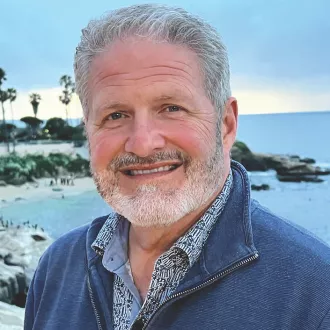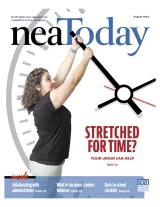Until recently, science teacher Val Chuchman would run into administrators in the hallway and enjoy friendly chats about local sports teams, music, or the students.
But that all changed when she became the union representative at her school in the Hillsborough School District, in Tampa, Fla. After 23 years as an educator, she realized it was time to think more deeply about those connections.
“On one hand, it is very much about relationships. You need to have respect for each other, and you really must be genuine,” Chuchman says. “But you don’t have to be their friends and go out for drinks. It is a fine line between being collegial and being too cozy.” Walking this line can be a challenge, especially as educators advocate for better working conditions and more resources for their students.
A focus on students, Chuchman says, is the key to making those relationships work.
“If your heart is in it, and you want to make the school better and improve circumstances for the kids, an administrator will know that,” she adds. “You both can come to respectfully understand that you each have a job to do that can put you in adversarial positions, but that has similar fundamental goals.”
The extra effort will pay off. Research shows that when collaborative teams work, student performance and school culture improve, and student absenteeism decreases. Positive working relationships also significantly improve teacher retention.
“It is a volatile time and people are triggered easily,” Chuchman says. “That perhaps makes this more challenging, but also all the more critical.”
To address this need, NEA joined with seven national educators’ organizations to develop the Collaborating for Student Success guidebook, which provides
a step-by-step road map to building partnerships and increasing shared decisionmaking. The guidebook suggests a three step structure that requires preparation, action, and reflection. Here’s what that looks like on the ground:
Quote byVal Chuchman

Prepare a solid foundation
The first step, Chuchman says, is to establish mutual goals and a shared understanding that when teachers are satisfied and engaged, both retention and student learning improve.
“It is all about students being successful, but we need happy, healthy teachers,” she says. “That’s what is best for the kids and where we have to come together. Administrators who understand that are good partners.”
Conversations can start with an agreement about what a great school looks like. Chuchman begins by asking questions like: What is your idea about the school culture? How do we work on that together specifically? How do we help our kids succeed?
Alan Young, a teacher and project manager for the Educator Growth System with Jefferson County Public Schools, in Louisville, Ky., has been involved in negotiations at the district and school level.
His advice? “You have to establish explicit goals that everyone has a role in defining,” Young says. “It could be a problem you want to define and solve or a future that you want to create. Everyone has to be doing something substantive.”
It’s helpful to break down larger goals into smaller projects, he advises, and then assign specific tasks to each member of the team.
Brian Ebertz, president of the Greece Teachers Association (GTA), in New York, says collaboration occurs at the school level in his district in part because it is written into the association’s contract, with a section that states:
We believe that teachers and admin istrators should share the responsibility for effective school management. That is, as equal partners, teachers and administrators should establish expectations for their school, together plan how to best realize these expectations, and together evaluate the outcomes of their effort.”
Take action
To achieve real results, this work must be a priority for both educators and administrators, Young advises, and it’s valuable to develop a team that includes both experienced members and people who are new to the process and bring fresh perspectives.
Teams with all veterans of the collaborative work or with a completely new membership both have diminished effectiveness, he notes.
Attitude also matters.
People need to understand it’s not about getting a win. It’s not about a ‘gotcha,’ Ebertz says. It’s about trying to support people and create an environment that’s really successful for students in a way that honors the profession of teaching.
In Greece, he says, school leaders on both sides found common ground through a nonprofit, developed by the union, that provides students with food and clothing, dental care, book drives, and college and career support. The organization also offers teacher minigrants. GTA’s collaborations on both school and district levels have paid off.
Educators and administrators came to an agreement on a wide range of issues, including redesigned standards based report cards that include ratings for social and emotional competencies; better information about special education; a more restorative code of conduct; and a culturally responsive education course, among other improvements.
Reflect on results
Once an agreement has been reached, the guidebook suggests that teams evaluate the outcomes and the effectiveness of the group’s processes and systems.
“I would advise that once the system is set up, you have to regularly review the work,” Young says. “It is important that the agreement be reviewed any time new leadership steps in.”
Input from a third party at this stage is helpful, he says: “It keeps the process clean and ensures no one feels manipulated.”
Finally, the guidebook calls for “scaling and spreading” successful processes. In other words, if you find something that works well, share what you’ve learned!
Quote byAlan Young

Join Us Today




